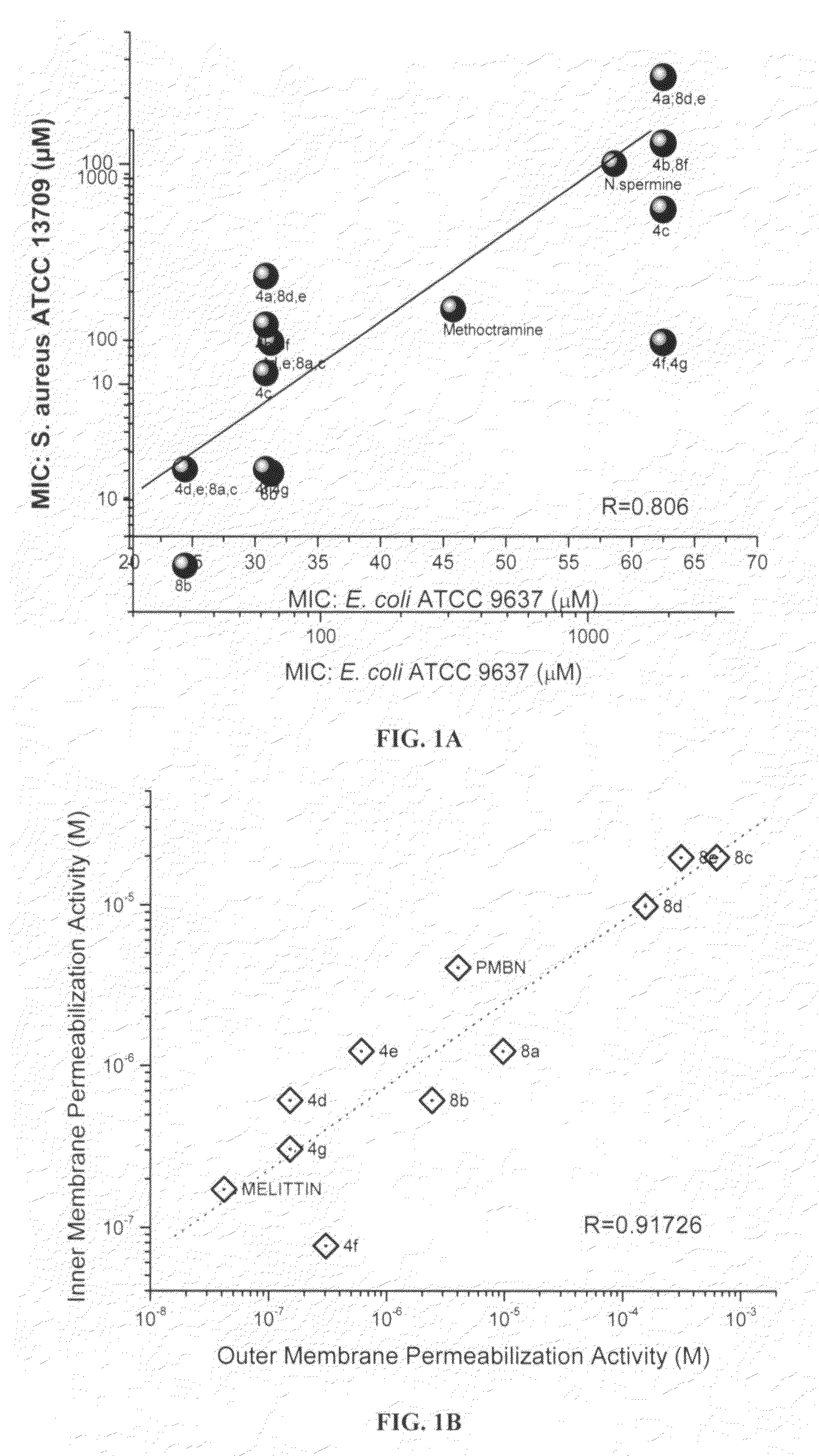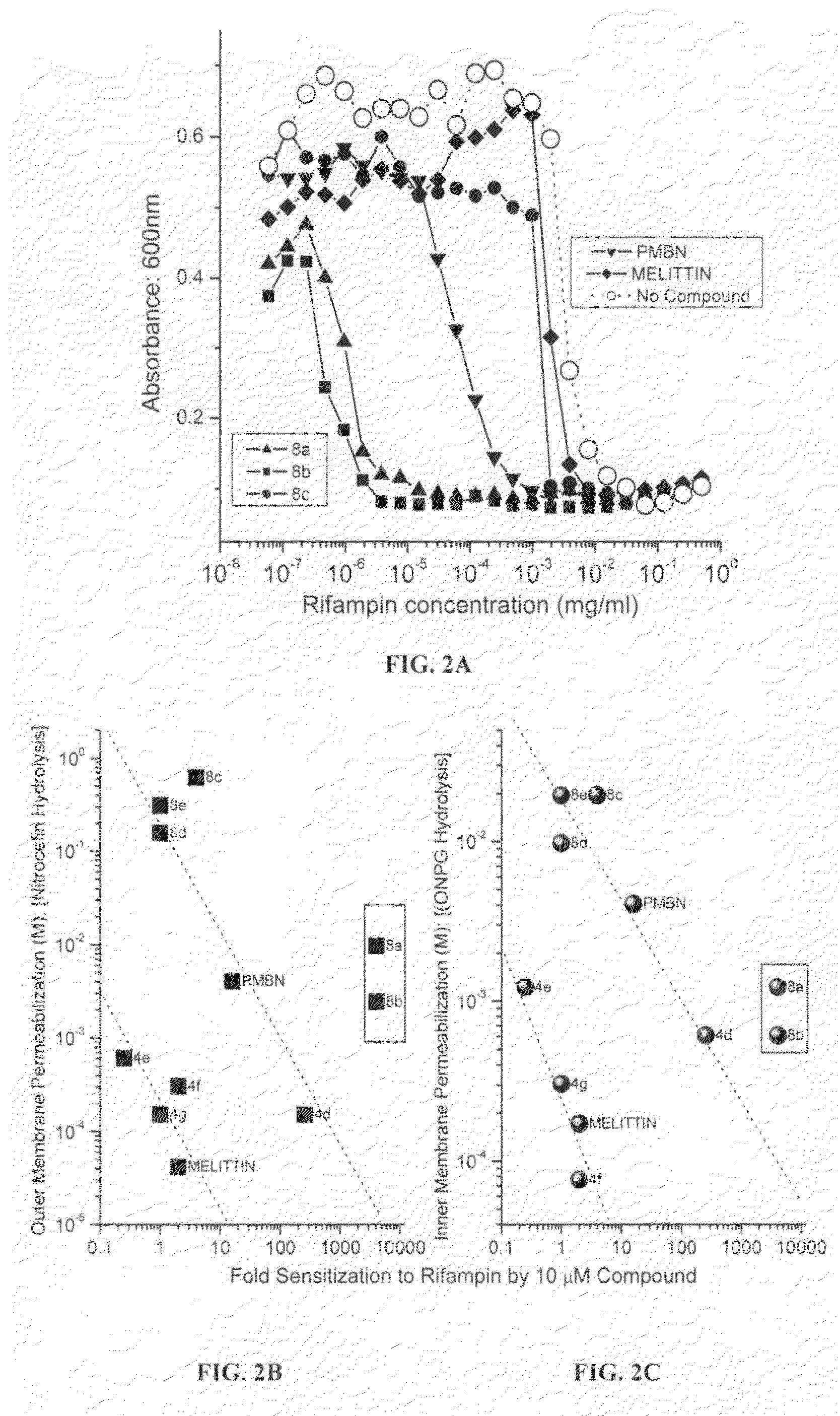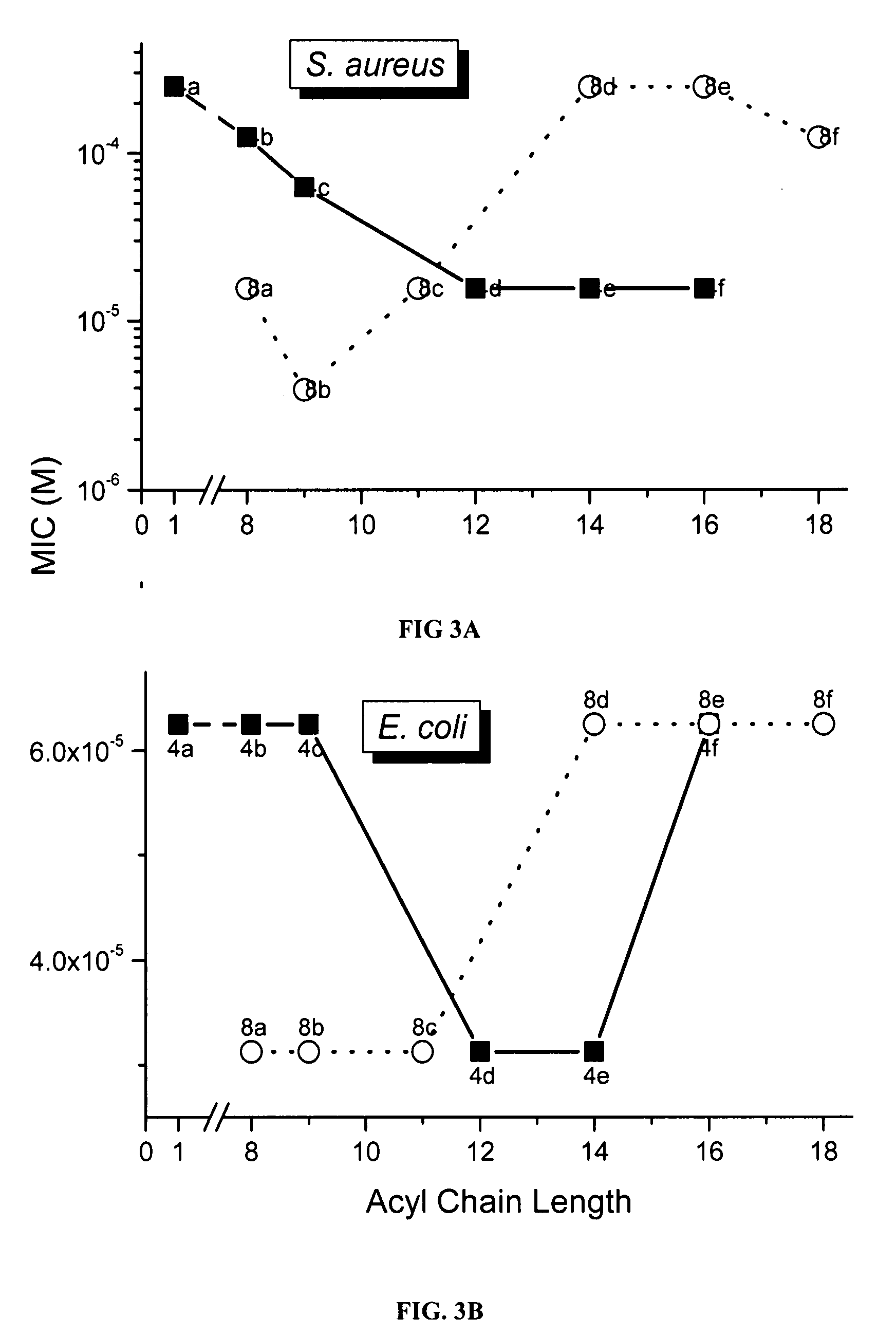Polyamines and their use as antibacterial and sensitizing agents
a technology of polyamines and sensitizing agents, applied in the field of polyamines and their use as antibacterial and sensitizing agents, can solve problems such as bacteria killing, and achieve the effects of enhancing susceptibility to rifampicin, high sensitizing activity, and high propensity
- Summary
- Abstract
- Description
- Claims
- Application Information
AI Technical Summary
Benefits of technology
Problems solved by technology
Method used
Image
Examples
example 1
Synthesis of Acylpolyamines
[0154]The details of the syntheses of the acylpolyamines (except 4g) have recently been published Miller et al., Lipopolysaccharide Sequestrants: Structural Correlates of Activity and Toxicity in Novel Acylhomospermines, J. Med. Chem. 48:2589-2599 (2005), which is incorporated by reference.
[0155]A summary of the synthetic strategy and the structures of the mono- and bis-acyl compounds are shown in the scheme below. Compound 4g was characterized by NMR spectroscopy, and mass spectrometry, and purity was established by elemental analysis.
[0156]Monoacyl-Homospermines.
[0157]wherein 3a, R=CH3; 3b, R=C8H17; 3c, R=C9H19; 3d, R=C12H25; 3e, R=C14H29; 3f, R=C16H33; 3g, R=C18H37.
[0158]wherein 4a, R=CH3; 4b, R=C8H17; 4c, R=C9H19; 4d, R=C12H25; 4e, R=C14H29; 4f, R=C16H33; 4g, R=C18H37.
[0159]The reagents were as follows: (a) Ac2O, py, DMAP, rt. (for 3a), or, RCOCl, DMAP, py, rt. (for 3b-c), or, ROCOCl, EtOAc, aq. NaHCO3 (for 3d, directly used for the next reaction), or,...
example 2
Minimum Inhibitory Concentrations
[0163]In this example, E. coli strain 9637 and S. aureus strain 13709 were procured from ATCC (Manassas, Va.). For IM permeability assays, E. coli ML-35 (ATCC 43827), a lactose permease-deficient strain with constitutive cytoplasmic β-galactosidase activity was used (26). Calcium chloride transformation of E. coli ML-35 was performed using the plasmid vector pBR322 (6), encoding tetracycline and ampicillin resistance genes (Promega, Madison, Wis.). The transformed strain, E. coli ML-35p, selected by ampicillin resistance, was utilized for the OM permeabilization assay. E. coli ML-35p was maintained on trypticase soy agar plates with 50 μg / ml of ampicillin.
[0164]Minimum inhibitory concentrations of the acylpolyamines were determined by broth microdilution method (1) as per NCCLS guidelines. Mid-log phase Mueller-Hinton broth (MHB; non-cation supplemented) cultures of organisms (40 μl; OD600nm adjusted to 0.5 AU, and diluted ten-fold) were added to equ...
example 3
Outer and Inner Membrane Permeability
[0167]In this example, the mechanisms and structure-activity relationships underlying the membrane permeabilizing actions of the compounds were investigated. Such properties provide the possibility of employing such compounds as adjuncts to conventional chemotherapy against resistant organisms, for purposes of sequestering endotoxin released as a consequence of Gram negative bacterial lysis. Thus, in this example, it was first investigated if the acylpolyamines would act on both the IM and the OM, presumably as a consequence of nonspecific membranophilic effects as has reported for a variety of cationic amphipathic peptides such as melittin, defensins, and bactenecins or, selectively perturb the OM in the manner of PMB.
[0168]The OM permeability was measured using a procedure similar to that reported by Lehrer et al., Concurrent assessment of inner and outer membrane permeabilization and bacteriolysis in E. coli by multiple-wavelength spectrophoto...
PUM
| Property | Measurement | Unit |
|---|---|---|
| physiological concentration | aaaaa | aaaaa |
| structure | aaaaa | aaaaa |
| composition | aaaaa | aaaaa |
Abstract
Description
Claims
Application Information
 Login to View More
Login to View More - R&D
- Intellectual Property
- Life Sciences
- Materials
- Tech Scout
- Unparalleled Data Quality
- Higher Quality Content
- 60% Fewer Hallucinations
Browse by: Latest US Patents, China's latest patents, Technical Efficacy Thesaurus, Application Domain, Technology Topic, Popular Technical Reports.
© 2025 PatSnap. All rights reserved.Legal|Privacy policy|Modern Slavery Act Transparency Statement|Sitemap|About US| Contact US: help@patsnap.com



